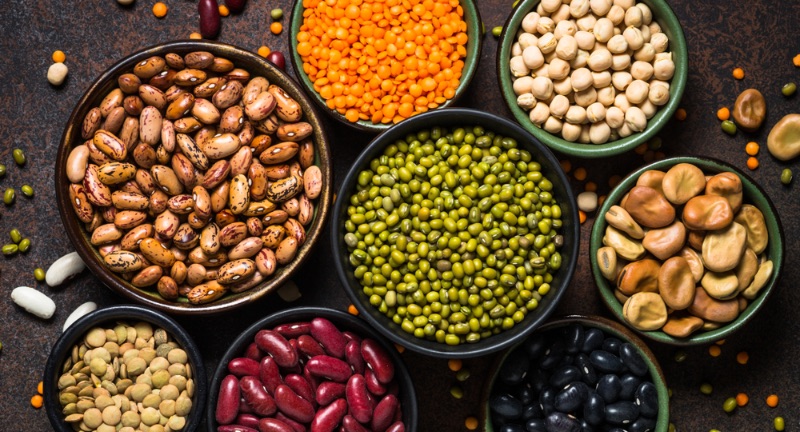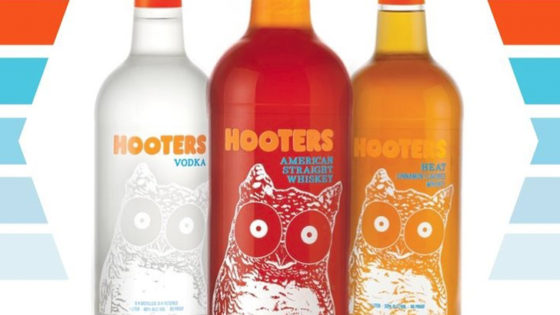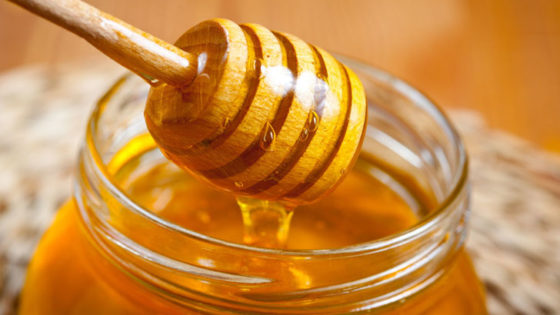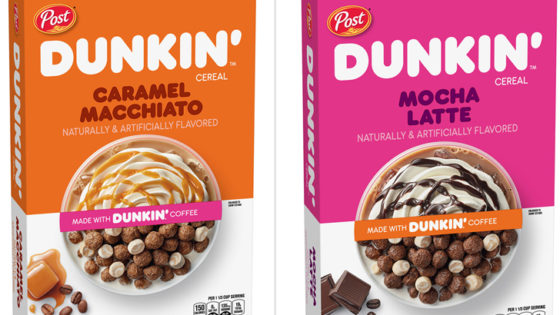FOOD
The Truth About Beans
Published
2 months agoon

Shutterstock
Beans might just be the underrated superheroes of the food world, packed with protein, fiber, and all sorts of nutrients but still flying under the radar in your pantry! Whether you’re a fan of the classic baked beans or prefer your legumes in a spicy chili, these little guys are here to save the day (and your health). Plus, they’re versatile and affordable and could even become the next trendy ingredient everyone’s talking about. Seriously, who knew beans could be so cool? So buckle up and get ready to explore why beans deserve a spot at the top of your grocery list!
Beans are a legume

Shutterstock
Beans belong to the legume family, which also includes peas, lentils, and peanuts. Legumes are unique because they grow in pods, and beans are one of the most popular varieties of legumes. As legumes, beans play an essential role in enriching soil with nitrogen, making them great for crop rotation. This nitrogen-fixing ability also makes them eco-friendly and beneficial to farming ecosystems.
Beans are rich in protein

Shutterstock
Beans are an excellent plant-based source of protein, making them a staple for vegetarians and vegans. A single cup of beans can provide up to 15 grams of protein, depending on the type. Protein is crucial for muscle repair, growth, and maintaining a healthy immune system. With their high protein content, beans make a hearty addition to a balanced diet.
They contain dietary fiber

Shutterstock
Beans are packed with dietary fiber, which is important for digestive health. Fiber helps regulate bowel movements, prevents constipation, and may lower cholesterol levels. It also aids in controlling blood sugar levels, making beans a great food choice for people with diabetes. Adding beans to your diet can contribute to long-term gut health and overall well-being.
Beans are low in fat

Shutterstock
Beans are naturally low in fat, making them a healthy choice for those looking to reduce their calorie intake. Most beans contain less than 1 gram of fat per serving, which is ideal for maintaining a heart-healthy diet. Their low-fat content, combined with high fiber and protein, makes beans a versatile ingredient in many meals. Whether in soups, salads, or chili, beans are a great addition to a well-balanced diet.
They are a good source of iron

Shutterstock
Iron is an essential mineral that helps carry oxygen throughout the body, and beans are a great source of this nutrient. Depending on the type, beans can provide up to 20% of your daily iron needs. Iron from plant-based sources like beans is non-heme iron, which is best absorbed when paired with vitamin C-rich foods. Including beans in your diet can help maintain energy levels and prevent iron deficiency.
Beans are a good source of folate

Shutterstock
Beans are rich in folate, a type of B vitamin that is vital for cell growth and reproduction. Folate is especially important during pregnancy as it helps prevent birth defects in the developing baby. A cup of beans can provide up to 90% of the recommended daily intake of folate. By including beans in your diet, you support brain function, red blood cell production, and overall cell health.
They have a low glycemic index

Shutterstock
Beans have a low glycemic index (GI), which means they release sugar slowly into the bloodstream. This helps stabilize blood sugar levels, making them an excellent food for people with diabetes or those looking to prevent it. The slow release of sugar also promotes long-lasting energy. Beans can be part of a balanced diet that supports steady energy levels throughout the day.
Beans help regulate blood sugar

Shutterstock
Beans can be a great ally in regulating blood sugar due to their high fiber and low glycemic index. The fiber content helps slow down the absorption of sugar into the bloodstream, preventing spikes in blood glucose. This regulation of blood sugar can help prevent both type 2 diabetes and other metabolic conditions. Consuming beans regularly can help maintain balanced energy levels and promote long-term health.
They are nitrogen-fixing plants

Shutterstock
Beans are nitrogen-fixing plants, which means they have the ability to convert nitrogen from the air into a form that can be used by other plants. This unique trait helps improve soil health, reducing the need for synthetic fertilizers. By planting beans, farmers can naturally enrich the soil for future crops, promoting sustainable farming practices. Beans are not just nutritious for us; they’re also beneficial to the environment!
Beans are cultivated worldwide

Shutterstock
Beans are grown in nearly every country around the world, making them a truly global crop. They thrive in various climates, from tropical to temperate, and are adaptable to different soil conditions. In fact, beans are considered one of the most widely grown crops, providing a vital source of nutrition for millions of people. Whether in Africa, Asia, or the Americas, beans are a cornerstone of many agricultural economies.
There are over 40,000 varieties of beans

Shutterstock
Did you know there are more than 40,000 different varieties of beans? From small, round black beans to large, kidney-shaped beans, the diversity is astounding. Each variety has its own unique flavor, texture, and nutritional benefits, making beans incredibly versatile in cooking. Whether you prefer the rich, earthy taste of black beans or the sweet, creamy flavor of navy beans, there’s a bean for every dish!
Beans are used in both cooking and as animal feed

Shutterstock
Beans aren’t just for human consumption – they’re also an important source of animal feed. The protein and fiber in beans make them an excellent choice for livestock and poultry. Beans are often ground into meal or included in animal feed blends, helping to support healthy growth and productivity. This dual purpose makes beans a versatile and valuable crop on farms worldwide.
Beans are often used to make plant-based meat substitutes

Shutterstock
Beans are a key ingredient in many plant-based meat substitutes. Their rich protein content and firm texture make them perfect for mimicking meat in dishes like burgers, tacos, and even sausages. The versatility of beans allows them to be flavored and seasoned in ways that resemble meat, providing a satisfying alternative for vegetarians and vegans. With the growing popularity of plant-based diets, beans are becoming an essential part of the meat-free movement.
They come in various colors, shapes, and sizes

Shutterstock
Beans come in an amazing variety of colors, shapes, and sizes, making them visually interesting as well as nutritious. You can find beans in shades of black, red, yellow, white, and even purple, each adding its own color to dishes. Their shapes range from round to oval to kidney-shaped, giving each type its own texture when cooked. This diversity in appearance and texture makes beans a fun ingredient to experiment with in the kitchen.
Beans are commonly grown in temperate climates

Shutterstock
Beans thrive in temperate climates, where the growing season is long and the temperatures are moderate. These conditions allow beans to develop properly, producing high yields. In fact, beans are often considered a cool-weather crop and can be grown in regions with mild winters. The temperate climate helps maintain bean quality and contributes to the crop’s widespread availability.
The common bean (Phaseolus vulgaris) is the most widely grown

Shutterstock
The common bean (Phaseolus vulgaris) is by far the most widely grown variety of beans globally. This bean species includes varieties like kidney beans, black beans, and pinto beans. It’s the go-to choice for cooking in countless dishes around the world. With its adaptability to different climates and soil conditions, the common bean has become a staple in global cuisine.
Beans are often dried for storage

Shutterstock
Drying beans is a common method for preserving them, allowing them to be stored for long periods without spoiling. Once dried, beans can last for months or even years if stored properly in a cool, dry place. Dried beans can be rehydrated and cooked in a variety of ways, making them a convenient pantry staple. This preservation method also helps to maintain the nutritional value of beans while extending their shelf life.
They can be sprouted for added nutrients

Shutterstock
Beans can be sprouted to increase their nutrient density and improve digestibility. Sprouting beans activates enzymes that break down some of the starches, making them easier to digest. The process also boosts the levels of vitamins, minerals, and antioxidants in the beans. Sprouted beans can be added to salads, sandwiches, or stir-fries for a nutritious and crunchy boost.
Beans are used in various cultural cuisines

Shutterstock
Beans are a cornerstone of many traditional dishes across different cultures. From the Mexican refried beans to the Indian dal, beans form the foundation of countless meals worldwide. They are also used in soups, stews, curries, and salads, adding flavor and nutrition to every bite. Their versatility and ability to absorb spices make them a beloved ingredient in diverse global cuisines.
Some beans contain toxins that need to be removed by cooking

Shutterstock
While beans are packed with nutrients, some varieties contain natural toxins, such as lectins, which can be harmful if consumed raw or undercooked. Proper cooking methods, like boiling beans for at least 10 minutes, help destroy these toxins and make the beans safe to eat. Always soak dried beans overnight before cooking to reduce cooking time and ensure safety. Cooking beans properly enhances both their nutritional value and safety for consumption.
Beans are sometimes referred to as “pulses”

Shutterstock
Beans are often grouped under the umbrella term “pulses,” which refers to dry, edible seeds of leguminous plants. Pulses include beans, lentils, peas, and chickpeas, all of which are known for their high protein and fiber content. This term is commonly used in the context of agriculture and nutrition, distinguishing these seeds from other crops. Pulses like beans are considered a vital part of the global food system.
They can improve heart health

Shutterstock
Beans are heart-healthy foods that can lower the risk of heart disease due to their high fiber, potassium, and antioxidant content. Fiber helps reduce cholesterol levels, while potassium supports healthy blood pressure. Antioxidants found in beans can also protect the heart from oxidative damage. Including beans in your diet can contribute to a strong cardiovascular system.
Beans are an excellent source of magnesium

Shutterstock
Beans are a rich source of magnesium, an essential mineral that plays a key role in over 300 biochemical reactions in the body. Magnesium supports nerve function, muscle contraction, and bone health. It also helps regulate blood sugar levels and promotes a healthy heart. By incorporating beans into your meals, you can easily meet your magnesium needs.
The oldest evidence of bean cultivation dates back to 7,000 BCE

Shutterstock
Beans have been cultivated for thousands of years, with the earliest evidence of bean cultivation dating back to 7,000 BCE in Central America. Archaeologists have found beans in ancient settlements, indicating their importance in early human diets. This long history shows how deeply ingrained beans are in our food culture. Their enduring popularity highlights their nutritional value and adaptability through the ages.
Beans were domesticated in both the Americas and Old World

Shutterstock
Beans were domesticated independently in both the Americas and the Old World. In the Americas, beans were first cultivated in regions like Mesoamerica, while in the Old World, they were grown in the Mediterranean and Asia. This dual domestication allowed beans to spread across the globe and become a global food staple. Beans played a crucial role in both pre-Columbian and ancient civilizations, contributing to food security worldwide.
Some beans, like the fava bean, are used in traditional medicine

Shutterstock
Certain beans, like the fava bean, have been used in traditional medicine for centuries. In ancient cultures, these beans were believed to help treat conditions like anemia, digestive issues, and fatigue. Modern research has supported some of these claims, with studies showing that fava beans are rich in compounds that promote health. This combination of nutritional value and medicinal properties makes beans a key ingredient in both culinary and herbal traditions.
Conclusion

Shutterstock
So, there you have it. Beans are truly the MVPs of the food world, and it’s time to give them the love they deserve! Not only are they packed with nutrients, but they’re also easy on the wallet and perfect for any meal. Whether you’re making tacos, soups, or even dessert (yes, dessert!), beans have got your back. So go ahead, add a little bean power to your plate, and get ready to feel like a true food trendsetter!
Related Topics:

More From Lifestylogy
-


Hooters Introducing Line of Premium Spirits
-


Taco Bell Bringing Back Nacho Fries – with a Surprise…
-


Rachael Ray Opens Virtual Restaurant
-


New Delicious Girl Scout Cookie Set to Debut in 2021
-


Study Finds Honey Excellent for Treating Colds
-


Dunkin’ Releasing Coffee Inspired Cereals
-


Uber Eats Waiving Delivery Fees for Local Restaurants
-


Starbucks to Start Selling Soup
-


KFC Ditching “Finger Lickin Good” Slogan – For Now